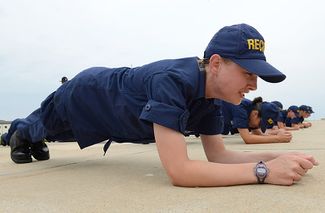Description
The plank exercise is an isometric core exercise that involves maintaining a position similar to a push-up that you have to maintain that plank posture for the maximum possible time.
Advantages
- plank exercise can activate core muscles with low compressive forces (1600 to 1800N) avoiding high compressive forces on the lumbar vertebrae which occur in back extension or trunk curls or lying prone with extended arms and legs[1]
- During the plank exercise body tries to maintain a neutral spine in response to the forces acting on it. Gravity poses a downward force on the elevated trunk, while the contact points on the ground(toes and forearms) counteract the downward force with an upward force this leads to that the trunk wanting to “sag.”. For proper form, the core muscles especially the abdominal muscles , must activate to resist this sagging position and maintain a neutral spine[1]
- Since serratus anterior is attached to your abdominal muscles by a serape effect so performing plank exercise increase firing of your serratus anterior so it`s a good exercise for serratus anterior
key points to proper plank exercise
- It was shown that doing isometric dorsiflexion during plank exercise cause more firing to abdominal muscles compared to isometric planterflexion[2]
- Abdominal muscles is attached to adductors by a sling called anterior oblique sling. Doing unilateral isometric hip adduction cause more firing to abdominal muscles compared to bilateral isometric hip adduction[3]
- Attentional focus on your abdominal muscles (upper or lower abdominal) has shown to increase firing of your abdominal muscles compared to not focusing on your abdominal muscles [4]
- ↑ 1.01.1 James W, Kendra C, Erin E, Stephanie D, Nicole L. John H. Hollman. Magnitudes of muscle activation of spine stabilizers in healthy adults during prone on elbow planking exercises with and without a fitness ball. Physiotherapy Theory and Practice.2018:34:
- ↑ Choi JH, Kim DE, Cynn H. Comparison of Trunk Muscle Activity Between Traditional Plank Exercise and Plank Exercise With Isometric Contraction of Ankle Muscles in Subjects With Chronic Low Back Pain. Journal of Strength and Conditioning Research.May 2019. 1064-8011
- ↑ Soo YK, Min HK, Eui RK, In GJ, Eun YS, Jae SO. Comparison of EMG activity on abdominal muscles during plank exercise with unilateral and bilateral additional isometric hip adduction. Journal of Electromyography and Kinesiology. 2016 :30: 9-14.
- ↑ Calatayud J, Casaña J, Martín F, Jakobsen MD, Andersen LL, Colado JC. Electromyographic Effect of Using Different Attentional Foci During the Front Plank Exercise. American Journal of Physical Medicine & Rehabilitation. 2019: 98(1):26-29.


